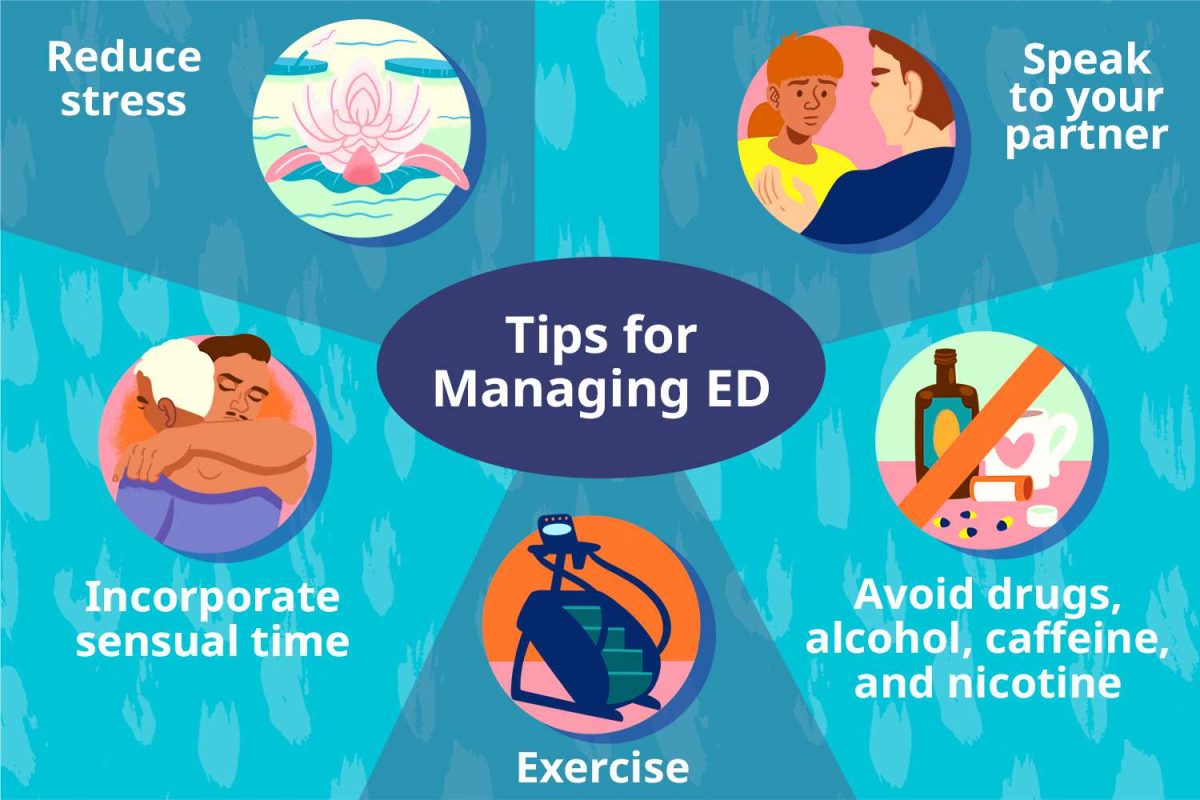Erectile Dysfunction (ED)
A Practical Guide on Managing Erectile Dysfunction
This Guidelines summary of British Society for Sexual Medicine guidance provides practical advice on the management of erectile dysfunction in men. Reflection is important for continuous learning and development, and a critical part of the revalidation process for UK healthcare professionals. Click here to access the Guidelines Reflection Record.
What is Erection Dysfunction?
- Erectile dysfunction (ED) is the persistent inability to attain and/or maintain an erection sufficient for satisfactory sexual performance
- ED is caused by various vascular, neuronal, hormonal and metabolic factors, mediated by endothelial and smooth-muscle dysfunction
- Although most causes of ED are physical, some are due to psychosexual issues; nevertheless, all patients with ED should have a history, examination and investigations performed, even if a psychological cause is suspected
- ED is a cardiovascular (CV) risk factor, posing a risk equivalent to that of current, moderate smoking
- ED is also an important marker for future CV events, with symptoms occurring some 3–5 years before an event
- The physical and psychosocial effects of ED can significantly affect the quality of life of patients and their partners
Who is at Risk?
The risk factors for ED are similar to those for cardiovascular disease (CVD):
- Older age
- Sedentary lifestyle
- Obesity
- Ddyslipidaemia
- Metabolic syndrome
- Diabetes
- Mmoking
What are the Other Benefits of Case-finding ED in Practice?
Increasing awareness regarding the availability of safe and effective oral drugs for ED, has led to more men seeking help for this condition, which facilitates the early detection of:
- diabetes (ED may be the first symptom in up to 20% of men)
- dyslipidaemia (may not require treatment according to primary prevention guidelines, but may be a major reversible component in ED)
- occult cardiac disease (in an otherwise asymptomatic man, ED may be a marker for underlying coronary artery disease)
- testosterone deficiency (TD; a reversible cause of ED that may not require specific ED treatment, and which also has other long-term health implications)
- associated lower urinary tract symptoms (LUTS)/benign prostatic hyperplasia (BPH) (ED and LUTS severity are closely related, and treatments for one condition may beneficially or adversely affect the other)
Treatment for Erectile Dysfunction
Reversible Causes
Any reversible causes of ED should be identified and treated appropriately. These include drug-induced ED, endocrine disorders such as TD, hyperthyroidism, or hyperprolactinaemia, and partner sexual problems
Erectile dysfunction due to TD may be resolved with appropriate testosterone therapy (T therapy), without the need for specific ED treatment. However, because T therapy in isolation can take many months to correct ED, a PDE5I can be prescribed to all men with ED when commencing T therapy, in the absence of any contraindications. A PDE5I should not be prescribed to men:
- receiving certain drugs, including nitrates and guanylate cyclase stimulators (such as riociguat)
- in whom vasodilation or sexual activity is not recommended. This includes men with severe/unstable heart disease
- who have loss of vision in one eye because of non-arteritic anterior ischaemic optic neuropathy, regardless of whether or not this episode was in connection with previous PDE5I exposure
- with hypotension (systolic blood pressure below 90/50 mmHg)
- with unstable angina or angina occurring during sexual intercourse.
Treatment Options for Erectile Dysfunction
To effectively manage ED, physicians must consider the efficacy and safety of the various treatment options available, together with patient and partner preference.
Medications
- Phosphodiesterase type 5 inhibitors (PDE5 inhibitors) such as Sildenafil (Viagra), Tadalafil (Cialis), and Vardenafil (Levitra, Staxyn) are first-line treatments for ED. They improve blood flow to the penis, facilitating an erection when sexually aroused.
Vacuum Erection Devices
- A vacuum pump device consists of a tube placed over the penis. By pumping out air, a vacuum is created, which increases blood flow, causing an erection. A constriction band is then applied to maintain the erection.
Penile Injections
- Medications such as Alprostadil can be injected directly into the side of the penis to produce an erection. Another option is a combination of drugs (BiMix or TriMix) that can also be used for more effective results.
- Surgical placement of a penile implant (prosthesis) can provide support for an erection. Implants are typically considered when other treatments have been ineffective.
Testosterone Replacement Therapy
- If tests indicate low testosterone levels contributing to ED, testosterone replacement therapy (in the form of injections, patches, or gels) may be recommended.
Lifestyle Modifications
- Improvements in diet, exercise, smoking cessation, and reducing alcohol consumption can help improve ED by enhancing overall health and reducing risk factors associated with erectile dysfunction.
Psychological Counseling
- Since stress, anxiety, and depression can contribute to ED, counseling or therapy can be beneficial, particularly if the condition is caused or worsened by psychological factors.


